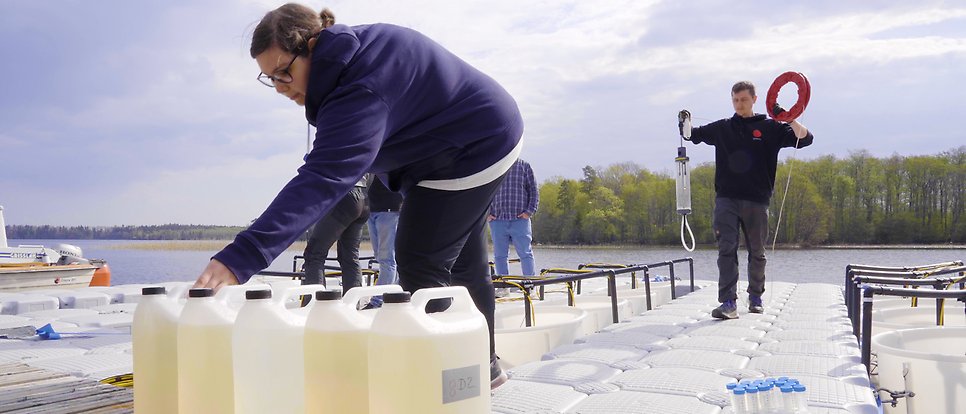How do torrential downpours affect plankton life in lakes?

The researchers are studying the effect on plankton life when water and nutrients flow into the lake. The submerged containers, or mesocosms, simulate the effect of everything from very little rain to torrential downpours.
At Lake Erken in Uppland, a research project is under way to better understand how the lake's plankton-like bacteria, algae and animals are affected by different runoff scenarios. The researchers are studying how the organisms react to differences in the supply of nutrients and organic material from the surrounding environment.
Mesocosms, or submerged containers filled with lake water, have nutrients and humic substances added to them over a three-week period. The overall amount of each substance mixed into each mesocosm is the same, but the mixing method differs in order to reflect different precipitation scenarios. For an extreme treatment, everything is poured in at once to simulate a torrential downpour, while small amounts are added to other containers every day to simulate a more continuous runoff, with a third group receiving an average treatment. There are also control containers to which nothing is added at all.
“It’s important to understand how the intensity and frequency of the supply affects plankton communities because we will experience more varied and extreme weather in the future. This exposes the organisms in the water to a more varied access to the resources they need for their growth, which some groups and species may have difficulty adapting to. It can lead to changes in biodiversity and ultimately even affect the entire food web structure,” explains Silke Langenheder, Director of the Erken Laboratory and leader of the project.
The plankton communities form the very basis of lakes’ food chains. If the concentration of nutrients increases, it can benefit both bacteria and phytoplankton. But humic substances from dead plant remains can also turn the water brown. This changes the light conditions in the lake and affects the phytoplankton that depend on that sunlight for their photosynthesis. To obtain a clearer picture of how all this is connected, the researchers are studying several different lakes.
“This is a major international collaborative project in which we are also conducting exactly the same experiment in several lakes simultaneously,” notes Langenheder.
In addition to Lake Erken, the researchers are conducting experiments at a field research station belonging to the University of Gothenburg and at Lake Bolmen, where the water company Sydvatten operates a field research station. Sydvatten has a particular interest in the experiment because this browning effect could have negative effects on water quality. If the lake becomes browner, it could lead to it becoming more complicated and expensive to purify drinking water.
“We hope that our results will lead to a better understanding of how extreme weather events affect plankton communities in our lakes, and their biodiversity in particular. In the long term, we can envisage our results potentially helping to improve models for predicting the occurrence and size of algal blooms by also taking into account the intensity and frequency of the runoff,” concludes Langenheder.
Åsa Malmberg
